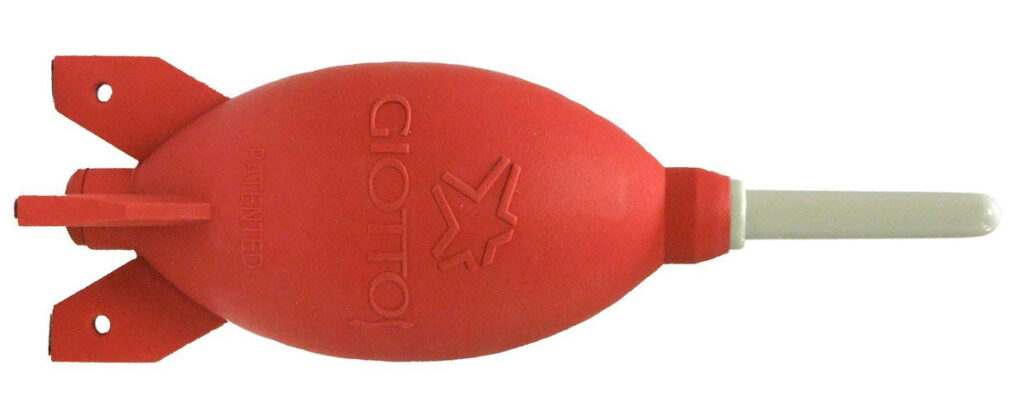An occasional problem with ILC cameras is that dust gets inside the camera, even inside the lenses, and can show up in your photos as dark spots. It can be tricky to remove dust from your sensor but in this article I’ll try to get you pointed in the right direction.
Check Your Camera
To check your sensor for dust first set your camera to manual focus and set your lens focus to infinity. Now take a picture of a solid white sheet of paper filling the frame. You may want to use a flash to make it nice and bright. Then open the picture on your computer and check it for spots. Thankfully my cameras and lenses are all clean and dust free, but you can google to see what the dust looks like. Generally sensor dust is smaller particles that are darker and better defined while lens dust appears as larger blotches that are lighter.
If you have the smaller dark spots you can clean the sensor to get rid of them. If there is dust on your lens for god’s sake wipe it off with a microfiber cloth, and be sure to check the rear lens element!
If there is dust inside your lens, you may have an issue that will require professional servicing. Unfortunately these lenses are not made to be opened and cleaned by the inexperienced. And it should be noted you will probably be letting more dust in by attempting to service a lens yourself.
In Camera Cleaning
Most modern cameras work to prevent dust by “cleaning” the sensor when you power off, all my cameras do this. On my cameras there is also a menu option to run a cleaning cycle manually.
So the first thing to try is to go into your camera menu and find the sensor cleaning option. Mind you, this is not an actual cleaning of your sensor. How it works in my camera is that the sensor is simply vibrated until the dust falls off. Bearing that in mind if you notice the dust doesn’t come off the first time you run the cleaning cycle, try running it a few more times. I’ve had my camera a couple years and it has had dust at times but it was removed by manually running the cleaning cycle.
Once you’ve run the cleaning cycle take another photo using the white paper method to see if you still have dust on the sensor. If you still have dust it’s time to try a more direct approach. Also double check that there isn’t dust on your lens elements.
Blow The Dust Away

Next up we will try using a rocket blower. A rocket blower is little hand held device that you squeeze to blow air out of it. Do not use canned or compressed air as this can damage your sensor. Do not blow into the camera with your mouth.
In your camera menu find the mirror lockup option, this will move the mirror up out of the way and allow you to gently puff on the sensor with the rocket blower a few times. Again, do not touch the sensor or use canned air to clean the sensor.
After doing this take a picture of the white paper again using the process I described earlier, do you still see dust? If not, congratulations, you’re done! If you do see dust, and it bothers you, there are still more options.
If the dust just won’t come off you can either take your camera to a service center for cleaning or attempt to clean it yourself.
Physically Removing The Dust

If you tried all the other options and you don’t want to send in your camera you can try the sensor cleaning swabs. It’s pretty self explanatory, gently mop up your sensor with a damp swab and you’re done. Do not clean your mirror with this device. Doing this is an at-your-own-risk proposition, I take no responsibility for any damage you do to your camera in attempting to clean your sensor!
Dust Delete Data
If you don’t want to clean the sensor or send in your camera another option is to digitally map out the dust. In Canon cameras this is called “Dust Delete Data”. To do this simply take a picture as described in the beginning of this tutorial. After you have a photo of your dust you can now save it in your camera as “Dust Delete Data”, then when you process your photos using Canon’s DPP software you can digitally remove the dust from the image.
Feel free to comment below if you have questions or need help!

